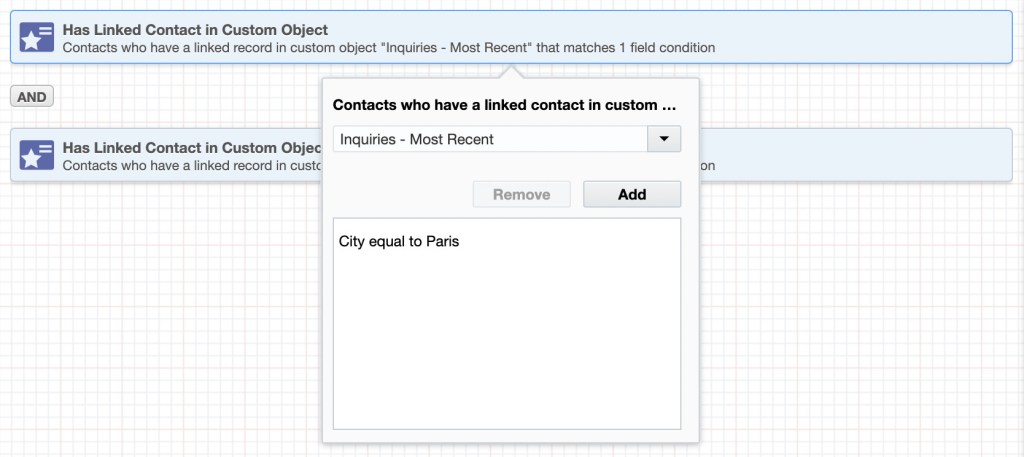The Fine Line of AND vs OR Operators in CDO Segmentation Explained
Marketers are tasked with spending marketing dollars on their best, most viable contacts in hopes of progressing prospects through the buyer journey. Most marketers don’t have a problem spending those marketing dollars or coming up with a list of contacts to market to… the problem usually arises in determining the most viable audience. In Eloqua, segmentation offers us the chance to delve into large datasets and develop tailored lists to use for email targeting or other marketing efforts. CDO segmentation takes this idea one step further than using the standard contact object data and allows for a wider range of data to be called upon.
Custom Data Objects, or CDOs, are exactly that: customized objects within Eloqua to store data that otherwise would not be part of the standard contact or account objects, though the CDO data can be linked to contact or account data. In terms of that linkage, CDOs can be set up in one of two ways:
- 1:1 – A one-to-one relationship means each contact (or account) can have only one record in that CDO (example: Inquiries – Most Recent)
- 1:Many – A one-to-many relationship means each contact (or account) can have more than one record in that CDO (example: Inquiries – All)
CDO Segmentation inside Eloqua
CDOs that are linked to contacts have records that are mapped to contact records and are eligible for use inside Eloqua segments. But building an Eloqua segment using CDO data can be tricky if you don’t understand how best to build the criteria and where to apply the AND and OR operators for maximum impact. Small changes to either of these variables can cause significant differences in what data is returned by the segment. Think of it like using the Oxford comma, where you place the comma can drastically change your understanding of a sentence:
- I love cooking my pets and my family. = your dog and family are on the dinner table
- I love cooking, my pets, and my family. = a charming list of things you love
For CDOs that are linked to accounts, segmentation can still return results but it now requires two relationships be in place: the CDO to account linkage, as well as an account to contact linkage. In this scenario, a segment will return contacts that have a linked account that is linked to CDO records that meet the criteria specified.
AND vs OR Operators
To understand the difference between returning results within a single record or across any record linked with a contact let’s take the following as examples. Note: The 1:1 CDO mostly operates as expected, but it’s the 1:many CDOs that can get tricky.
1:1 Contact Linked CDO, e.g. most recently submitted inquiries
| Contact | Linked CDO | City | State | Country |
|---|---|---|---|---|
| A | 111 | Paris | Texas | USA |
| B | 222 | Montpellier | – | France |
| C | 333 | Paris | – | France |
AND Operator – Same Segment Criteria:
City is Paris AND Country is France
This evaluation logic is looking for both criteria to be present in a single record. Since there is only one record to be evaluated per contact that record must contain both criteria for its linked contact to be eligible. Only Record 333 meets both criteria, so only Contact C would be returned in the segment count.
AND Operator – Separate Segment Criteria:
City is Paris
AND
Country is France
This evaluation logic is looking for both criteria to be present across any records associated with the contact. Since there is only one record to be evaluated per contact that record must contain both criteria for its linked contact to be eligible. Only Record 333 meets both criteria, so only Contact C would be returned in the segment count.
OR Operator – Same Segment Criteria:
City is Paris OR Country is France
This evaluation logic is not possible in Eloqua segmentation, because evaluating multiple criteria within a single CDO record defaults to AND statements between the criteria.
OR Operator – Separate Segment Criteria:
City is Paris
OR
Country is France
This evaluation logic is looking for either of these criteria to be present across any records associated with the contact. Since there is only one record to be evaluated per contact that record can contain either of the criteria for its linked contact to be eligible. Records 111, 222, & 333 each meet at least one of these criteria, so Contact A, B, & C would be returned in the segment count.
1:Many Contact Linked CDO, e.g. all inquiries submitted over time
| Contact | Linked CDO | City | State | Country |
|---|---|---|---|---|
| A | 111 | Paris | Texas | USA |
| A | 101 | Toulouse | – | France |
| B | 222 | Montpellier | – | France |
| B | 202 | Berlin | – | Germany |
| C | 333 | Paris | – | France |
| C | 303 | Nice | – | France |
AND Operator – Same Segment Criteria:
City is Paris AND Country is France
This evaluation logic is looking for both criteria to be present in a single record. Since there are multiple records to be evaluated per contact any one record must contain both criteria for the linked contact to be eligible. Only Record 333 meets both criteria, so only Contact C would be returned in the segment count.
AND Operator – Separate Segment Criteria:
City is Paris
AND
Country is France
This evaluation logic is looking for both criteria to be present across any records associated with the contact. Since there are multiple records to be evaluated per contact, these criteria can be found separately or together on any of the associated records for the linked contact to be eligible. Records 111 & 101 together meet both criteria and record 333 by itself meets both criteria, so Contacts A & C would be returned in the segment count.
OR Operator – Same Segment Criteria:
City is Paris OR Country is France
This evaluation logic is not possible in Eloqua segmentation, because evaluating multiple criteria within a single CDO record defaults to AND statements between the criteria.
OR Operator – Separate Segment Criteria:
City is Paris
OR
Country is France
This evaluation logic is looking for either of these criteria to be present across any records associated with the contact. Since there are multiple records to be evaluated per contact, either of these criteria can be found on any of the associated records for the linked contact to be eligible. Records 111, 101, 222, 333 & 303 each meet at least one of these criteria, so Contact A B, & Contact C would be returned in the segment count.
Taking CDO Segmentation Even Further
These are the options within Eloqua segments using CDO data. The major limitation of building segments inside Eloqua based on CDO data is that they return contacts as results, not the CDO records themselves. The Relationship One Custom Data Object Segment Builder app allows for expanded capabilities that include building segments inside the CDO program canvas that results in CDO records rather than contacts. For that use case, reach out to get more details. Alternatively, to take this a step further, if emails or landing pages need to be personalized with CDO data the Personalization Manager app might be the right fit.
Depending on the type of CDO linkage and the operators used results will vary so it’s important to understand how you’re building segments inside Eloqua. Hopefully, this blog can be a helpful tool for understanding the differences in CDO segmentation, but if more direction is needed, Relationship One is here to help.
Thank you for subscribing!












